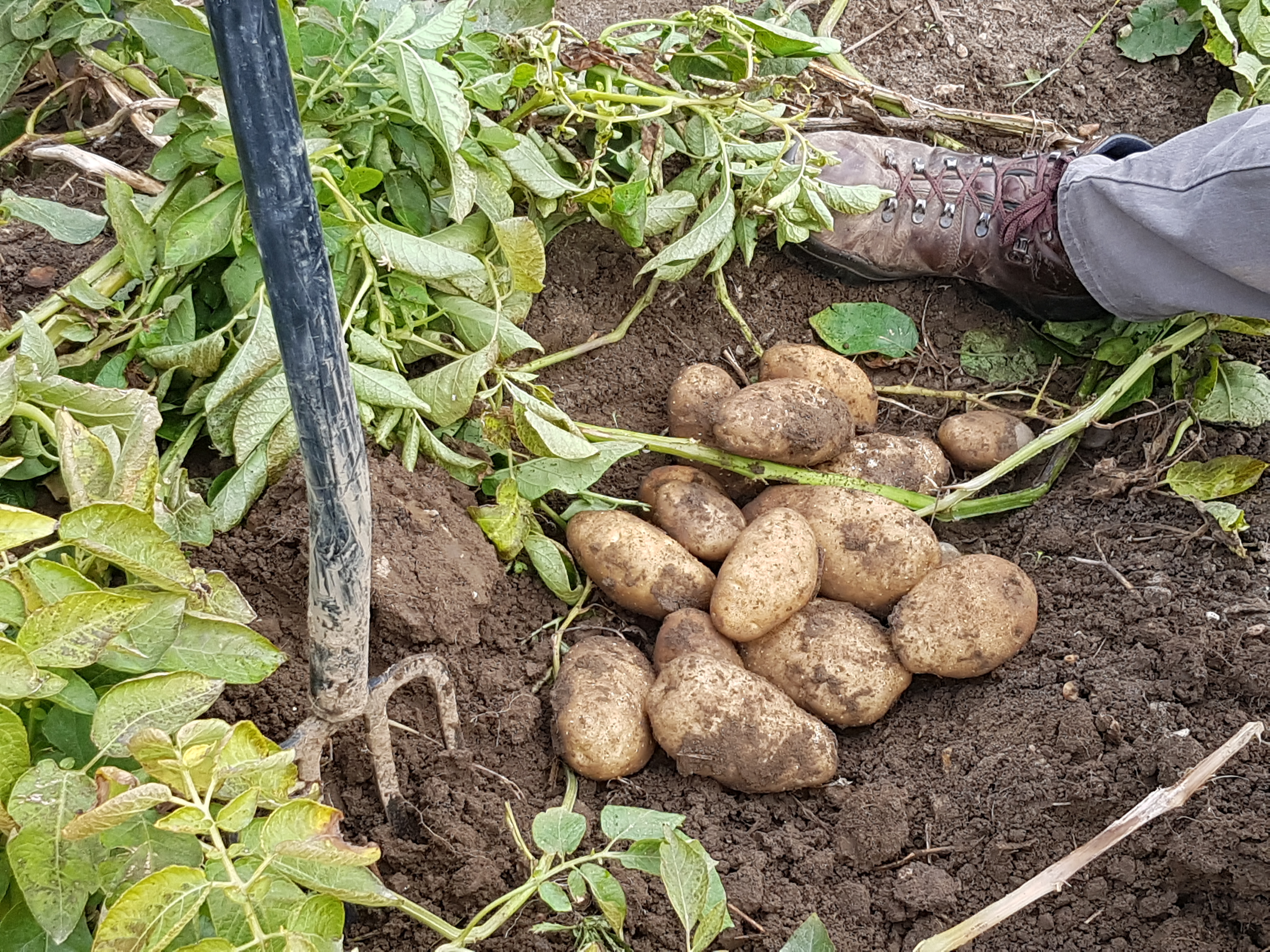
13 Sep Agronomy Updates – Sept 13th
Hi everyone. Sorry I missed sending an update last week….I was over in Europe on an AIM Working Group study tour in Belgium and England. Stay tuned for a report coming soon on what we saw on this trip, specifically on the topic of soil health.
While I was away, you all had to contend with Hurricane Dorian and the clean-up afterward. I know that some of you have had your hands full dealing with downed trees, loose siding, and more. There is some damage to crops, but it appears to be quite variable in severity.
Thus far, it appears that the most damage to potatoes is in varieties like Dakota Russets that stand up pretty straight without as much foliage as say Russet Burbank. We are learning a little more every day post-storm, but the Dakotas (and in some areas, Prospects) look to have suffered the most. Some growers are reporting damage from salt water near the shore. Thankfully, there doesn’t appear to be many fields that suffered with drowned out areas of any substantial size, but the ground is now saturated in most parts of the Island and can’t handle a lot more rainfall.
Field Management ahead of Harvest:
Bearing in mind that it is September 13th and harvest is underway in many communities, it is timely to start thinking about some best management practices ahead of the harvest.
- If you did have areas that were significantly water-logged or under water for 24 hours following the hurricane last weekend, it would wise to mark those areas in your field. These areas should be dug last, so that that are at the front of the pile if there is any issue with rot. If there were severely impacted by water, you will have to have the conversation with your crop insurance agent and farm partners on whether that area is even worth digging. If you do dig those areas, make sure those potatoes are in an area that is easy to get to if you start to face issues in storage.
- Do you have a field in a trial? Either with a research partner (ie. AIM, Cavendish Agri Services) or just on your own? Make sure you communicate with your farm staff that you need to get samples from that field before it gets dug. It’s good practice to place a marker of some kind (ie. Flags, stakes) to mark the divide between treatment and a check strip. You made the effort to set up a trial in your field…ensure that you get data from that field to help you with your decision making!
- Traffic Management on fields: If at all possible, try and restrict traffic in your field to the smallest number of lanes possible. Have your potato trucks travel the same tracks as much as possible to reduce soil compaction, especially if soil conditions are wet. Heavy loads on relatively narrow tires is a great recipe for soil compaction, so restricting that compaction to the smallest possible area of your field is ideal. This is a conversation worth having with your equipment operators this year.
- Are the tops still green? Just because we haven’t had late blight spores detected so far doesn’t mean there is no chance of infection, especially as we move into cooler, wetter weather. Consider using a longer-acting chemistry to cover you until top-killing to ensure your crop doesn’t get infected and undo your hard work during the season.
- Stay Safe! Ensure all guards are in good repair and have conversations about farm safety with all of your employees. Ensure all machinery is turned off before it is worked on. The quick decision that you think might save 5 minutes could lead to life-long regrets. Please have first aid kits and fire extinguishers with you in the field.
Disease/Pest Update:
We are into the last couple of weeks of spore sampling. Thankfully, we still have not detected any late blight spores this season. Contrast that with where I just visited (the UK), where we easily detected foliar late blight as soon as we walked into a couple of fields! Don’t worry…my clothes will be washed before I go anywhere near a farm!
Alternaria spore detections are continuing to come in quite low or non detected. Conditions should not be favourable for Alternaria from here on out. Bortrytis spore numbers are erratic…some big numbers in some areas, low or non-detected in others, without a clearly identifiable trend observed. Continue to keep an eye on your fields for signs of Bortrytis infection or spread.
Thank you to Lorraine MacKinnon for the weekly Potato Pest Updates, with the most recent edition out yesterday. Aphid Alert has wrapped up for the season, with low aphid numbers observed in the final week of counts. Growers are reminded that plant and tuber samples can be sent to the PEI Analytical Lab for diagnosis…take advantage of this service if you are unsure about what you may be dealing with. Many tuber rot diseases can look similar, as can Bortrytis and late blight. Never hurts to get confirmation.
Here’s hoping that we can string a few dry, sunny days together next week to finish off this crop!
Ryan
